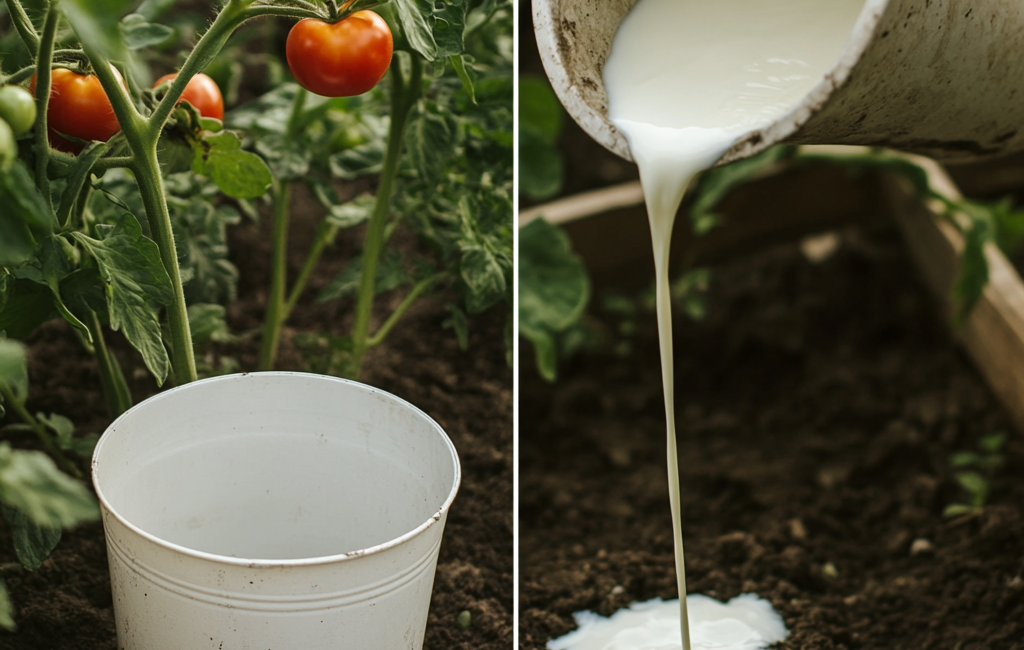So, why not give it a try? With just a few ingredients and a little bit of time, you can create your own natural fertilizer and watch your garden thrive like never before.
In the world of gardening and agriculture, there’s a growing interest in natural and sustainable methods to nourish plants and improve soil health. Among the many options available, yeast has emerged as a powerful, natural fertilizer, rich in essential nutrients that are vital for plant growth. But what makes yeast so effective, and how can you use it to boost your garden’s productivity? In this comprehensive guide, we’ll explore the benefits of using yeast as a fertilizer, the science behind its effectiveness, and how to apply it to your plants for maximum results.
Why Yeast is a Powerful Natural Fertilizer
Yeast, commonly associated with baking and brewing, is a type of fungus that has been used for centuries in food production. However, its application extends far beyond the kitchen. Yeast is packed with essential nutrients that are crucial for plant growth, including nitrogen, phosphorus, and potassium—the three primary nutrients found in most commercial fertilizers.
1. Rich in Essential Nutrients
- Nitrogen (N): Nitrogen is a critical component of chlorophyll, the molecule responsible for photosynthesis in plants. It promotes lush, green foliage and is essential for the overall growth and vigor of plants.
- Phosphorus (P): Phosphorus plays a key role in energy transfer within plants, contributing to strong root development, flowering, and fruiting. It is vital for the plant’s reproductive processes and overall health.
- Potassium (K): Potassium regulates various physiological functions in plants, including water uptake, enzyme activation, and disease resistance. It enhances the quality of fruits and flowers and contributes to the plant’s overall hardiness.
In addition to these primary nutrients, yeast is also a natural reservoir of micronutrients such as iron, manganese, copper, and zinc. These micronutrients, though required in smaller quantities, are essential for various biochemical processes in plants and contribute to their overall health and development.
2. Promotes Beneficial Microorganisms
Yeast not only provides direct nourishment to plants but also fosters the growth of beneficial microorganisms in the soil. These microorganisms, including bacteria and fungi, play a crucial role in breaking down organic matter, cycling nutrients, and enhancing soil structure. By stimulating the activity of these microorganisms, yeast contributes to a more fertile and balanced soil environment, leading to healthier plants.
3. Enhances Soil Structure
The application of yeast as a fertilizer can also improve soil structure. Healthy soil structure is essential for proper root development, water retention, and aeration. Yeast helps to bind soil particles together, creating a crumbly texture that allows roots to penetrate easily and access the nutrients and water they need.
How to Use Yeast as a Fertilizer: A Step-by-Step Guide
CONTINUE READING IN NEXT PAGE
Using yeast as a fertilizer is a straightforward process, similar to preparing bread dough. Here’s how you can harness the power of yeast to nourish your plants:
1. Prepare the Yeast Solution
To create a yeast-based fertilizer, you’ll need the following ingredients:
- 1 tablespoon of active dry yeast
- 1 tablespoon of sugar
- 4 cups of lukewarm water
Step-by-Step Instructions:
- Mix the yeast and sugar: Start by dissolving the sugar in lukewarm water. The sugar acts as a food source for the yeast, helping to kickstart the fermentation process.
- Add the yeast: Sprinkle the yeast into the sugar water and stir gently until it is fully dissolved.
- Let it ferment: Allow the mixture to sit in a warm place for about 30 minutes to an hour. You’ll notice bubbles and foam forming on the surface, indicating that the yeast is active and fermenting.
2. Dilute the Yeast Solution
Once the yeast solution is ready, it’s important to dilute it before applying it to your plants. The concentrated yeast mixture can be too strong if applied directly.
Dilution Ratio:
- For general use: Mix 1 cup of the fermented yeast solution with 1 gallon of water.
- For more sensitive plants: Use 1/2 cup of yeast solution per gallon of water.
3. Apply the Fertilizer
Now that your yeast fertilizer is prepared and diluted, it’s time to apply it to your plants. Here are some tips on how to do this effectively:
- Watering: Pour the diluted yeast solution at the base of your plants, focusing on the root zone. This method ensures that the nutrients are absorbed directly by the roots, promoting healthy growth.
- Foliar Spray: For an extra boost, you can also use the diluted yeast solution as a foliar spray. Spraying the leaves allows for quick absorption of nutrients through the stomata (small openings on the leaves).
- Frequency: Apply the yeast fertilizer once every two to four weeks during the growing season. This will provide a consistent supply of nutrients to your plants and help maintain soil health.
Beyond Yeast: Complementary Natural Fertilizers
While yeast is a fantastic natural fertilizer, it’s often beneficial to use it in conjunction with other organic fertilizers to provide a well-rounded nutrient profile for your plants. Here are some complementary options:
1. Manure
Manure is a traditional and widely used organic fertilizer rich in nitrogen, phosphorus, and potassium. It also contains organic matter that improves soil structure and moisture retention. Manure can be mixed into the soil or used as a top dressing.
2. Compost
Compost is another excellent source of nutrients and organic matter. It’s made from decomposed plant material and kitchen scraps, and it enriches the soil with a wide range of nutrients. Compost also enhances soil texture, promotes beneficial microorganisms, and improves water retention.
3. Worm Castings
Worm castings, also known as vermicompost, are a nutrient-rich organic fertilizer produced by earthworms. They are an excellent source of nitrogen, potassium, and micronutrients, and they help improve soil structure and aeration.
The Science Behind Yeast as a Fertilizer
To truly appreciate the benefits of yeast as a fertilizer, it’s helpful to understand the science behind how it works. When yeast ferments, it produces carbon dioxide, which is released into the soil and absorbed by plant roots. Carbon dioxide is a key component of photosynthesis, the process by which plants convert light energy into chemical energy.
Additionally, the byproducts of yeast fermentation, including alcohols and organic acids, can enhance the availability of nutrients in the soil, making them more accessible to plants. These compounds also help to suppress harmful pathogens, reducing the risk of disease and promoting overall plant health.
Practical Tips for Using Yeast in the Garden
Here are some additional tips to help you get the most out of using yeast as a natural fertilizer:
- Test on a Small Area First: If you’re new to using yeast as a fertilizer, it’s a good idea to test it on a small area of your garden first. This will allow you to observe how your plants respond before applying it more widely.
- Avoid Overapplication: While yeast is beneficial, too much of a good thing can be harmful. Stick to the recommended dilution and application frequency to avoid overloading your plants with nutrients.
- Store Unused Yeast Solution: If you have leftover yeast solution, store it in a sealed container in the refrigerator for up to a week. Be sure to stir it before using it again, as the yeast may settle at the bottom.
Conclusion: Yeast as a Sustainable Fertilizer Choice
Incorporating yeast into your gardening routine is a simple, cost-effective way to boost plant growth, enhance soil health, and promote sustainable gardening practices. With its rich nutrient content and ability to support beneficial microorganisms, yeast is more than just a kitchen staple—it’s a powerful tool for gardeners looking to nurture their plants naturally. Whether you’re growing vegetables, flowers, or houseplants, yeast can help you achieve healthier, more vibrant growth, all while keeping your gardening practices eco-friendly.
So, why not give it a try? With just a few ingredients and a little bit of time, you can create your own natural fertilizer and watch your garden thrive like never before.




